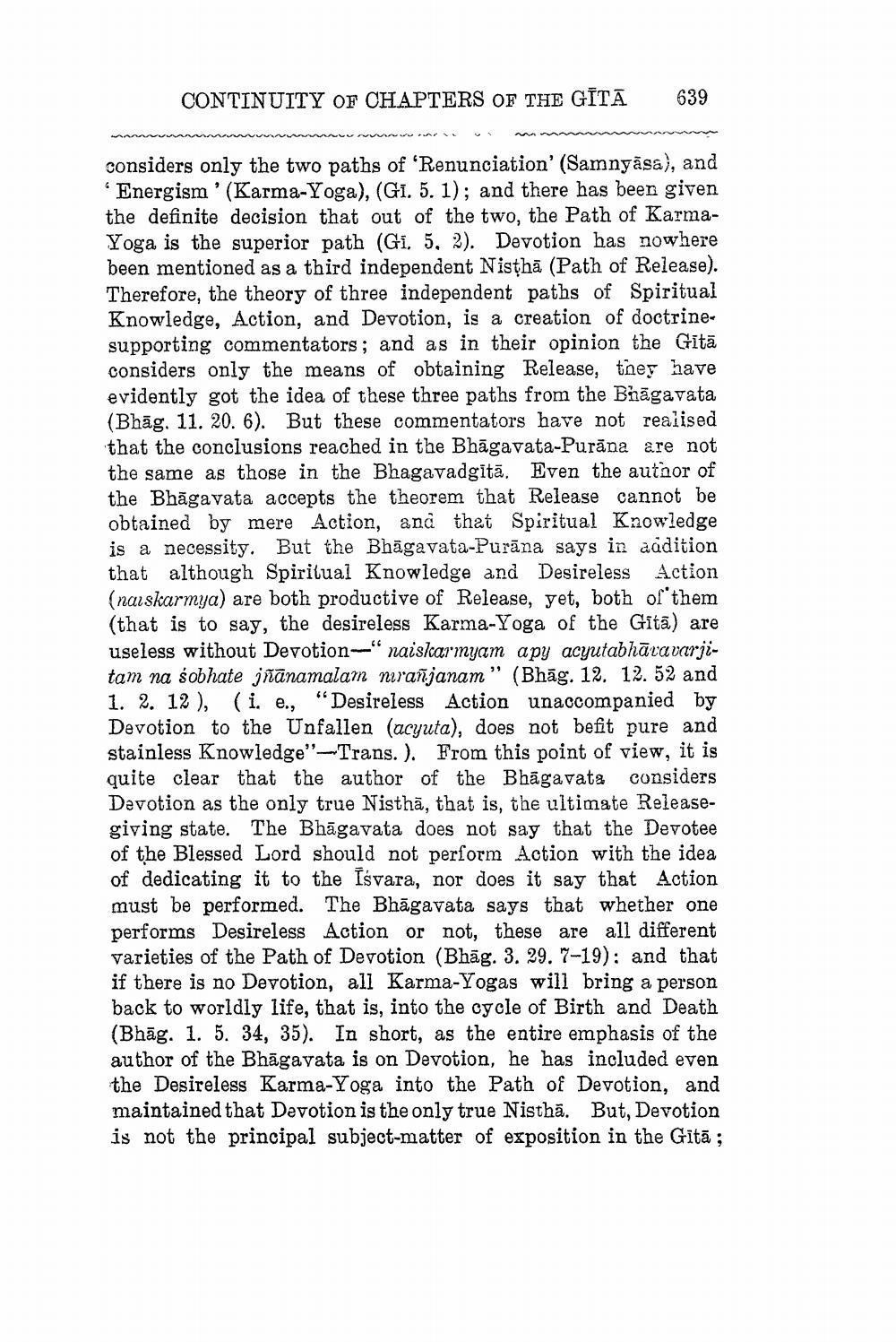________________
CONTINUITY OF CHAPTERS OF THE GĪTĀ
639
considers only the two paths of 'Renunciation' (Samnyāsa), and 'Energism' (Karma-Yoga), (GI. 5.1); and there has been given the definite decision that out of the two, the Path of KarmaYoga is the superior path (Gi. 5, 2). Devotion has nowhere been mentioned as a third independent Nisthā (Path of Release). Therefore, the theory of three independent paths of Spiritual Knowledge, Action, and Devotion, is a creation of doctrine. supporting commentators; and as in their opinion the Gita considers only the means of obtaining Release, they have evidently got the idea of these three paths from the Bhāgavata (Bhāg. 11. 20. 6). But these commentators have not realised that the conclusions reached in the Bhāgavata-Purāna are not the same as those in the Bhagavadgitā. Even the autaor of the Bhāgavata accepts the theorem that Release cannot be obtained by mere Action, and that Spiritual Knowledge is a necessity. But the Bhagavata-Purāna says in aadition that although Spiritual Knowledge and Desireless Action (naiskarmya) are both productive of Release, yet, both of them (that is to say, the desireless Karma-Yoga of the Gitā) are useless without Devotion-"naiskarmyam apy acyutabhāravarjitam na sobhate jñānamalam niranjanam" (Bhāg. 12. 12. 52 and 1. 2. 12), (i, e., "Desireless Action unaccompanied by Devotion to the Unfallen (acyuta), does not befit pure and stainless Knowledge"--Trans.). From this point of view, it is quite clear that the author of the Bhagavata considers Devotion as the only true Nisthā, that is, the ultimate Releasegiving state. The Bhāgavata does not say that the Devotee of the Blessed Lord should not perform Action with the idea of dedicating it to the Isvara, nor does it say that Action must be performed. The Bhāgavata says that whether one performs Desireless Action or not, these are all different varieties of the Path of Devotion (Bhāg. 3. 29.7-19); and that if there is no Devotion, all Karma-Yogas will bring a person back to worldly life, that is, into the cycle of Birth and Death (Bhāg. 1. 5. 34, 35). In short, as the entire emphasis of the author of the Bhāgayata is on Devotion, he has included even the Desireless Karma-Yoga into the Path of Devotion, and maintained that Devotion is the only true Nisthā. But, Devotion is not the principal subject-matter of exposition in the Gītā;




